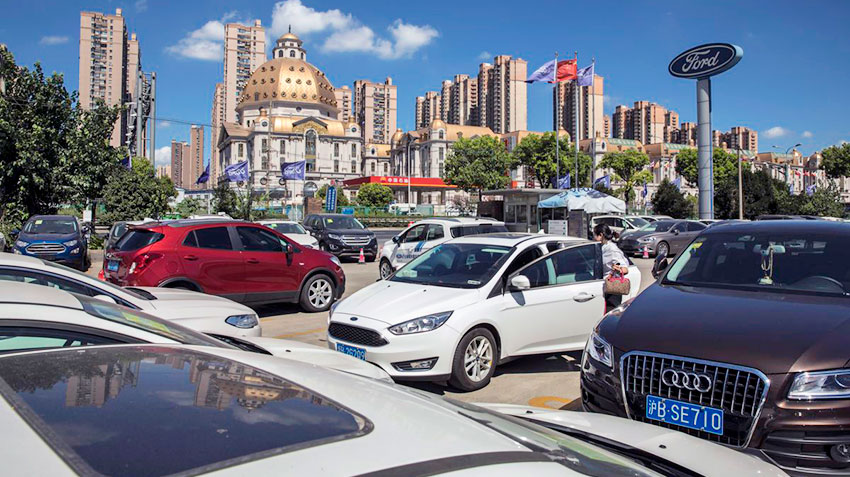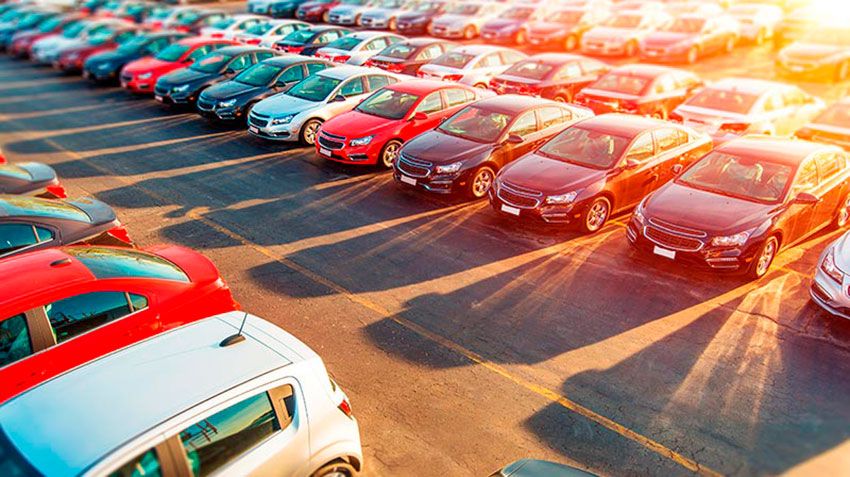Chinese automakers are panicking at the first sign of depression

1 February 2019
Auto industry of China for the first time in 28 years, finished the year in negative territory, but the growth potential of the market is still there
Shanghai columnist for the industry publication Automotive News China Yang Jian shared his thoughts about the first in the modern history of "depressive" for the Chinese automotive industry 2018.
China's automobile market declined in 2018 for the first time since 1990 – sales of new cars fell by 2.8% to 28.1 million.
The decrease was not so serious in terms of volume, but it has created a strong financial pressure on Chinese automakers, which have long been used to play only in a growing market.
Following several Chinese automakers have already published their financial reports for the year 2018. And two of them are already stating huge losses over the last year.
So, Haima Motor Corp. a small private passenger car manufacturer, said that in connection with reduction of sales in 2018, 52% to less than 68 thousand cars, his financial loss could grow to ¥1.8 billion ($269 million), compared with less than ¥1 billion in 2017.
State automaker Jianghuai Automobile Co. in 2017 recorded a net profit of ¥450 million, However, estimates that last year its sales fell 9.5% to below 463 thousand, which he lost ¥770 million
The market decline has also had consequences for the branch of the Ford Motor Co. in China. So, its joint venture with Changan Automobile Co. for passenger automibile, warns of decline in net profit to 93%, and its joint venture Jiangling Motors Corp. For the production of commercial vehicles, in turn, argues that net profit may have fallen in 2018, 87%.
Even the largest local producers in China are unable to avoid an unprecedented decline.
And yet the two major Chinese automaker claim that earned more money last year.
So one of the two major state-owned automakers – SAIC Motor Corp. together with its joint ventures for the production of passenger car companies General Motors and Volkswagen Group, estimates the increase in net profit 4.6% to ¥36 billion.
The biggest private Chinese manufacturer of SUVs and pickups – Great Wall Motor Co., reported that its net profit increased by 7% to ¥5.4 billion.
Still, the net profit of the two companies last year was not caused by the demand for the vehicle as such, the total sales of SAIC grew by only 1.8% to 7.1 million, while delivery Great Wall even fell 1.6% to below 1.1 million
For SAIC profit driver was the only transaction on acquisition of a subsidiary Huayu Automotive Systems Co. company Skoito Automotive Lighting Co. is a large manufacturer Shanghai automotive lighting.
According to the company, without a corresponding return on investment net profit of SAIC in 2018 would be reduced by 1.5%.
The result is Great Wall was also obtained by accounting manipulation is part of the R & d expenditure for the year 2018 was considered as investment in assets not related to production costs, which helped to show the alleged "profit".
Despite the apparent decline in the national industry, Beijing has so far refrained from imposing strong measures of support to stimulate market demand, such as the reduction in VAT when buying a new car.
Instead, the Chinese government plans to expand consumer recycling program of cars in the countryside. It will also help to get rid of old cars that pollute the environment is much stronger than the modern more economical and environmentally friendly passenger cars and light trucks, but experts believe it is not effective enough to revive sales.
This means that the financial pressure on Chinese automakers will continue, at least in the near future.

author: Chinese analyst is too pessimistic looking at your native car industry, but as they say: we would they care. What almost 30 years of continuous economic growth, the so-called "Chinese economic miracle" when something was supposed to end in an axiom. To dramatize this point, especially not worth it. All large national economies of developed countries of the world now passed through these stages. The most important factor today is the current low level of the Chinese people the car (less than a hundred cars per 1,000 people) that is still very far even from the average world values, not to mention the "Golden billion" countries. And this suggests that the potential of the Chinese automobile market is still there, so the known analytical Agency Booz & Company believes that while that of China auto industry only took off the "foam" and "cream" with the current economic phenomenon of the country, tE. provided a car only residents of cities of the 1st category (over 10 million inhabitants, and today it is 14 cities) and big cities (which is 150 cities). So, that leaves melakukannya a very large city, 3rd (over 500 thousand) and 4th (over 100 thousand) of categories, where, however, success will be very difficult. To succeed in this market, automakers will need to clearly define the segments in the market and develop clear strategies for each segment. First is the geographical factor that takes into account that consumers in different regions of China have different transportation needs depending on topography and economic development of the region. Second, the emphasis on consumer preferences and local culture, which is important for the reputation of the brand, its fashion, lifestyle and practicality of the car are the key criteria when making a purchasing decision.
In addition, the local car industry will have to draw conclusions from the completed first phase of growth – to develop further and reach the world level, he will have an emphasis on these fundamental global trends in motorization such as the development of the vehicles to the actuator, information network services, as well as the continued adoption of car-sharing, and, of course, the priority development of public transport also on electric. In the future, used it on the Chinese market platforms (including the contribution of Chinese know-how) for future electric vehicles, it is able to strengthen the presence of China in the world market. It is now obvious that 2020 years will be the era of displacement of conventional cars with internal combustion engines (ICE) with markets, first in developed countries as well as China and India, where China will become a leading player. Here, however, hide another huge stumbling block – China continues to develop (although it was contrary to the plans and even direct prohibitions Beijing) coal electric power plants, which can lead to real-world environmental disaster, if the process is not at least brought under control by Beijing in the coming years. Further, the entire increase in energy consumption needs to be at the expense of renewable otherwise the whole effect of the "zero emissions", including to combat global warming will be nullified..
|
|
|
Element was not found.








